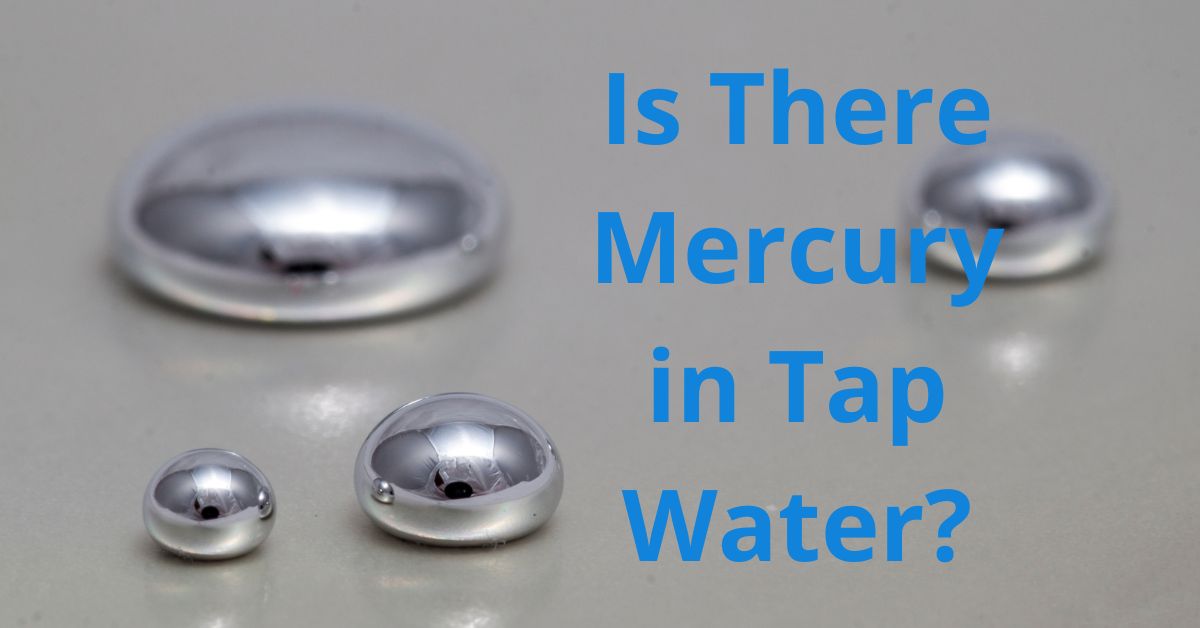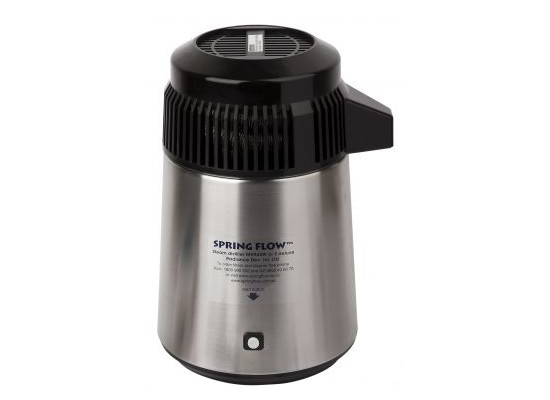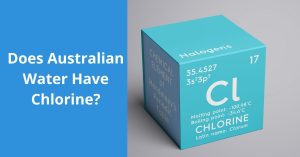Clean, safe drinking water is essential for our health and well-being. However, concerns about contaminants in our water supply, particularly heavy metals like mercury, have become increasingly common. Let’s explore the presence of mercury in tap water, its potential side effects, and how various water filtration methods can help remove this toxic element from our drinking water.

Air, water, and soil all naturally contain mercury. It exists in a variety of forms, including elemental or metallic mercury, inorganic mercury compounds, and organic mercury compounds. While mercury can enter water sources through natural processes like volcanic activity and weathering of rocks, human activities such as industrial pollution, mining, and improper disposal of mercury-containing products have significantly increased its presence in our environment.
The positive news is that in most developed countries, strict regulations are in place to monitor and control mercury levels in public water supplies. According to the Australian Drinking Water Guidelines (ADWG), the maximum level of mercury allowed in drinking water is 0.001 mg/L or 1 μg/L (microgram per liter). This means that for the vast majority of people, the mercury levels in their tap water are likely to be well below this threshold.
However, it’s important to note that even low levels of mercury exposure over time can potentially have adverse health effects. Additionally, certain areas may have higher mercury concentrations due to local environmental factors or ageing infrastructure. Therefore, it’s crucial to be aware of the potential risks and take appropriate precautions.
What are the side effects of mercury in drinking water?
Mercury is a potent neurotoxin, meaning it can have serious effects on the nervous system. The severity of these effects depends on a variety of factors, including the form of mercury, the level of exposure, and individual susceptibility. The following are some possible side effects of mercury exposure through drinking water:
Neurological issues: Mercury can affect brain function, leading to symptoms such as tremors, impaired vision or hearing, and memory problems.
Kidney damage: In severe cases, the kidneys are particularly vulnerable to mercury toxicity, which can result in reduced kidney function or even kidney failure.
Developmental problems: pregnant women and young children are especially susceptible to mercury’s effects. Exposure during pregnancy or early childhood can lead to developmental delays, cognitive impairment, and other neurological issues.
Cardiovascular effects: Some studies suggest that mercury exposure may increase the risk of high blood pressure and heart disease.
Immune system dysfunction: Mercury can interfere with the immune system’s normal function, potentially increasing susceptibility to infections and autoimmune disorders.
Digestive issues: Ingesting mercury-contaminated water may cause gastrointestinal problems such as nausea, vomiting, and diarrhoea.
It’s important to emphasise that these side effects are typically associated with higher levels of mercury exposure than what is commonly found in treated tap water. Nevertheless, given mercury’s toxicity, it’s prudent to minimise exposure whenever possible.
Can water filters remove mercury?
Yes, certain types of water filters can effectively remove mercury from drinking water. However, when it comes to mercury removal, not all filters are equal. Here are some of the most effective filtration methods:
Reverse Osmosis Water Filters: Reverse osmosis is one of the most effective methods for removing a wide range of contaminants, including mercury. This technology uses a semi-permeable membrane to filter out contaminants at the molecular level. There are two main types of reverse osmosis systems for home use:
a) Reverse osmosis benchtop water filter: These compact units sit on your countertop and are ideal for those who don’t want to modify their plumbing. You can easily move or store them when not in use due to their portability.
b) Reverse osmosis undersink water filter: These systems are installed under your sink and connected directly to your water supply. They typically have a higher capacity and can provide filtered water on demand through a dedicated faucet.
Benchtop Reverse Osmosis Water Filter
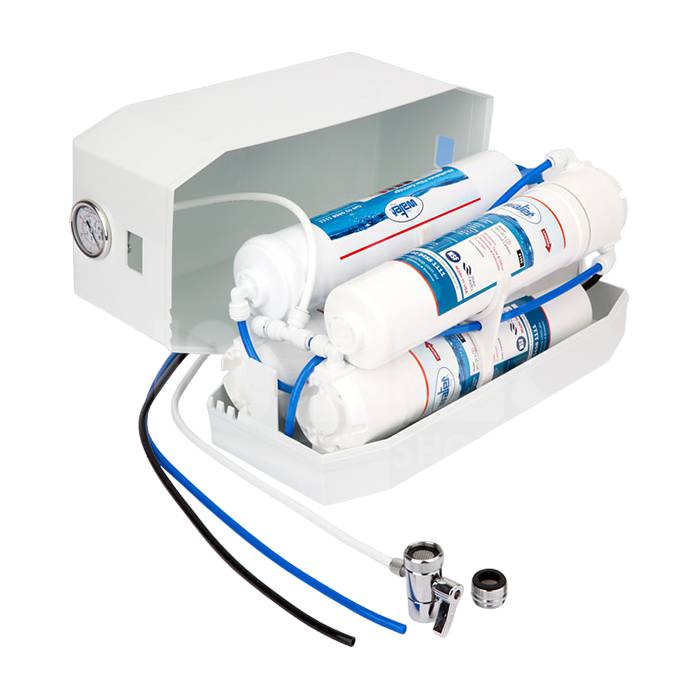
Undersink Reverse Osmosis Water Filter
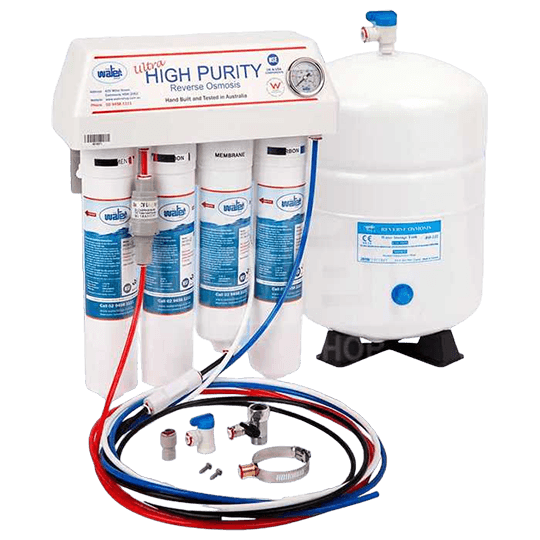
Activated Carbon Filters: While not as comprehensive as reverse osmosis, high-quality activated carbon filters can remove some amount of mercury, particularly organic mercury compounds. These filters are often found in:
a) Benchtop Water Filter: These standalone units use gravity to filter water through activated carbon and other filter media. They’re simple to use and don’t require any installation.
b) Undersink Water Filter: Installed under the sink, these systems are similar to reverse osmosis systems but typically use activated carbon as the primary filtration method.
Distillation: Water distillers, such as the Megahome Water Distiller, can effectively remove mercury along with many other contaminants. Distillation involves boiling water and then condensing the steam back into liquid form, leaving contaminants in the boiling chamber.
Ion Exchange: Some water filtration systems use ion exchange resins that can effectively remove certain forms of mercury, particularly inorganic mercury compounds.
Combination Systems: Many modern water filtration systems combine multiple technologies for comprehensive contaminant removal. For example, a system might use both activated carbon and reverse osmosis to target a wide range of pollutants, including different forms of mercury.
When choosing a water filter for mercury removal, it’s crucial to look for systems that are independently certified. While mercury in tap water is generally not a significant concern in areas with well-regulated water supplies, it’s understandable to want an extra layer of protection against this potent toxin. Investing in a high-quality water filtration system, such as a reverse osmosis water filter or a combination system that includes activated carbon, can provide peace of mind and ensure that you and your family have access to clean, safe drinking water.

